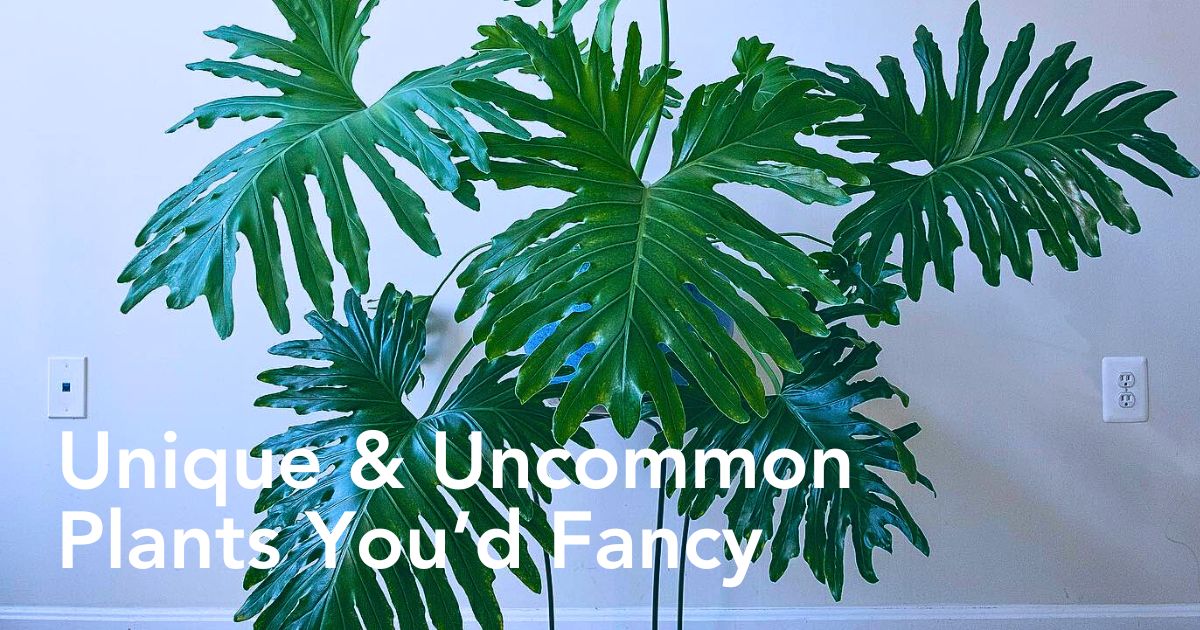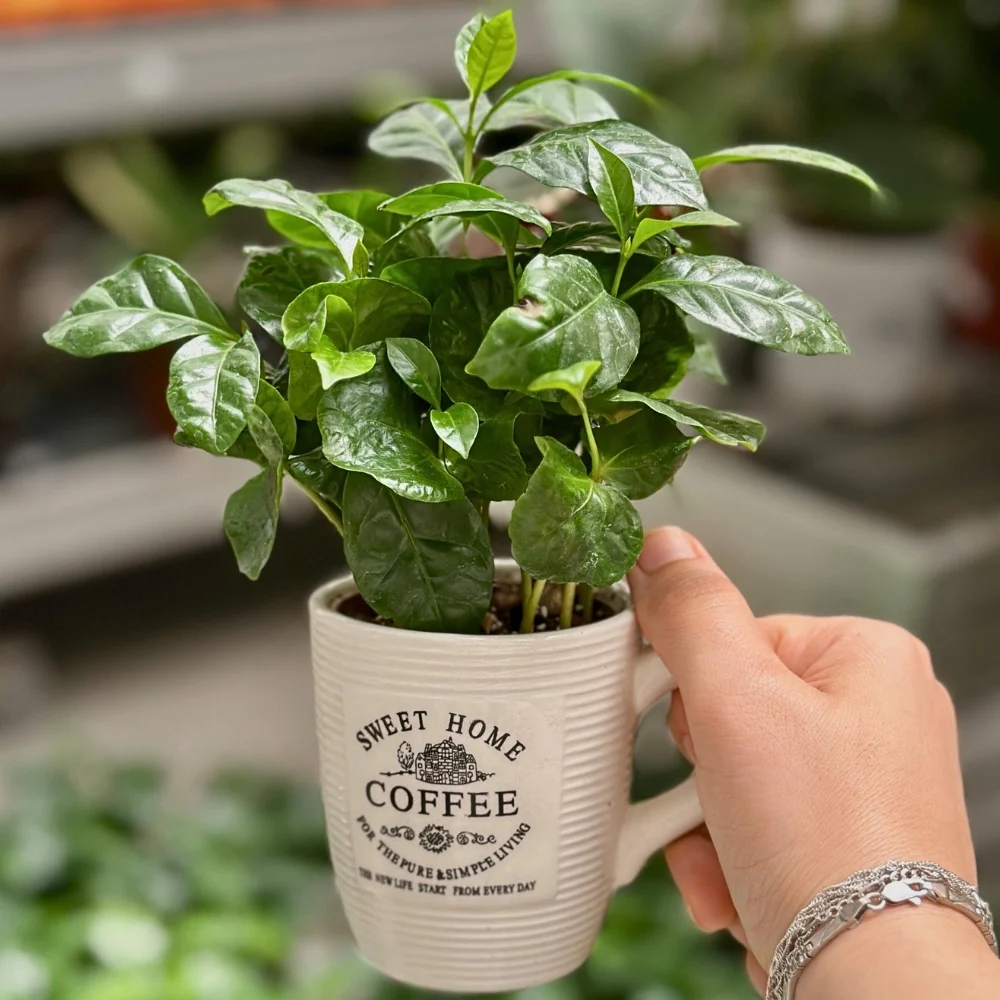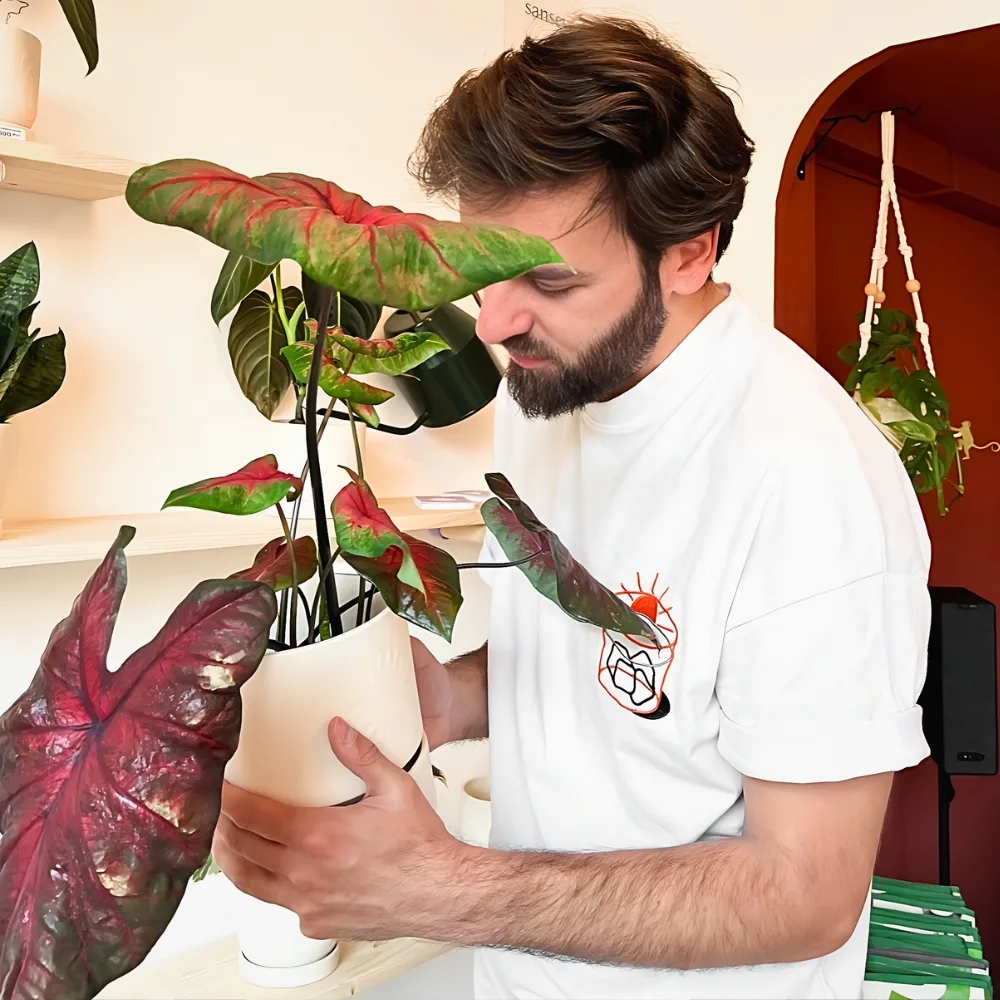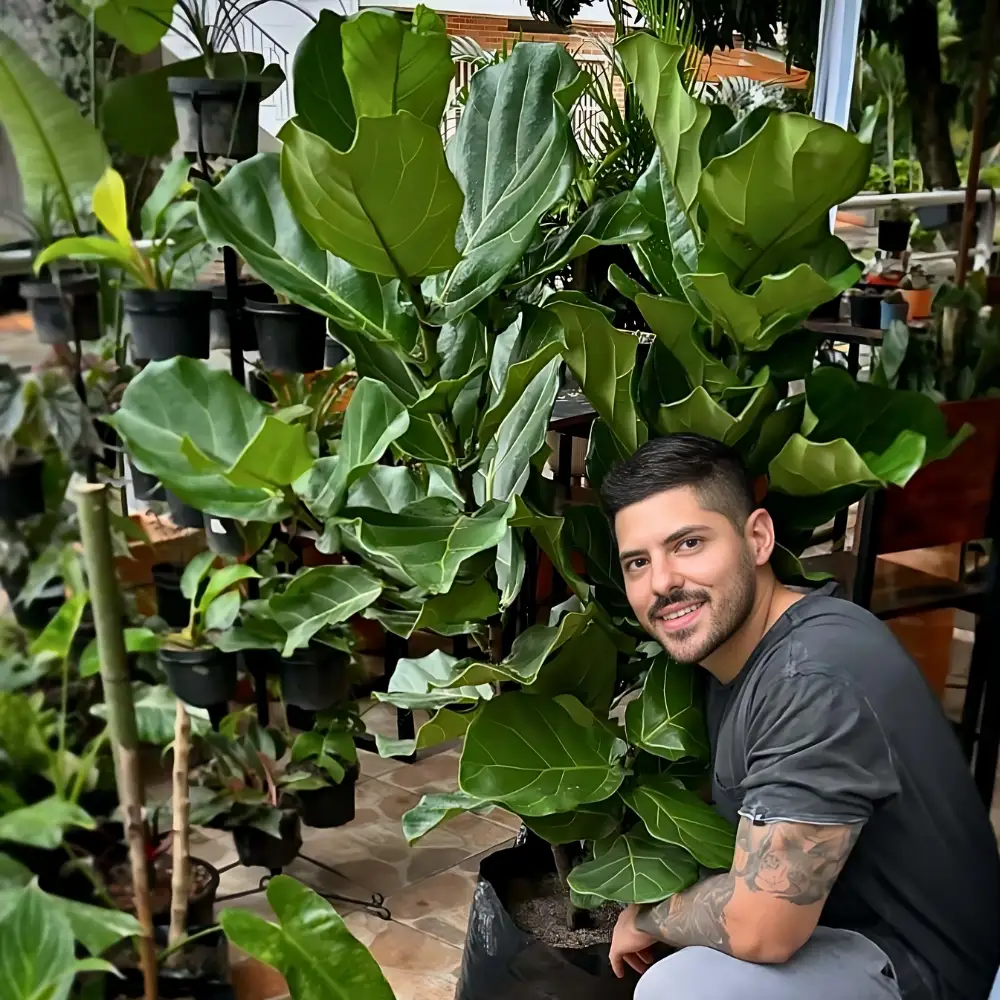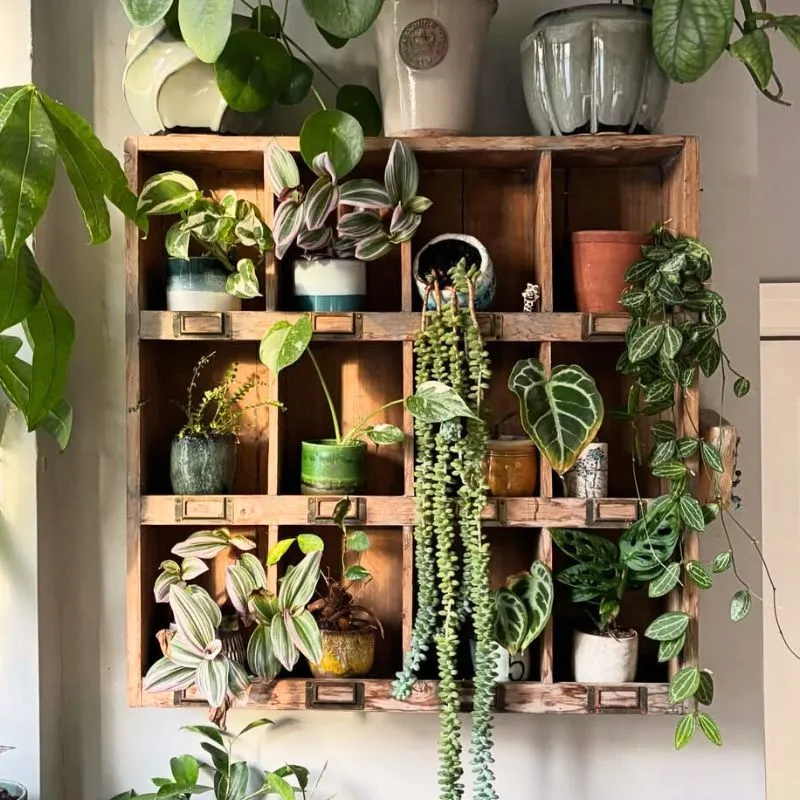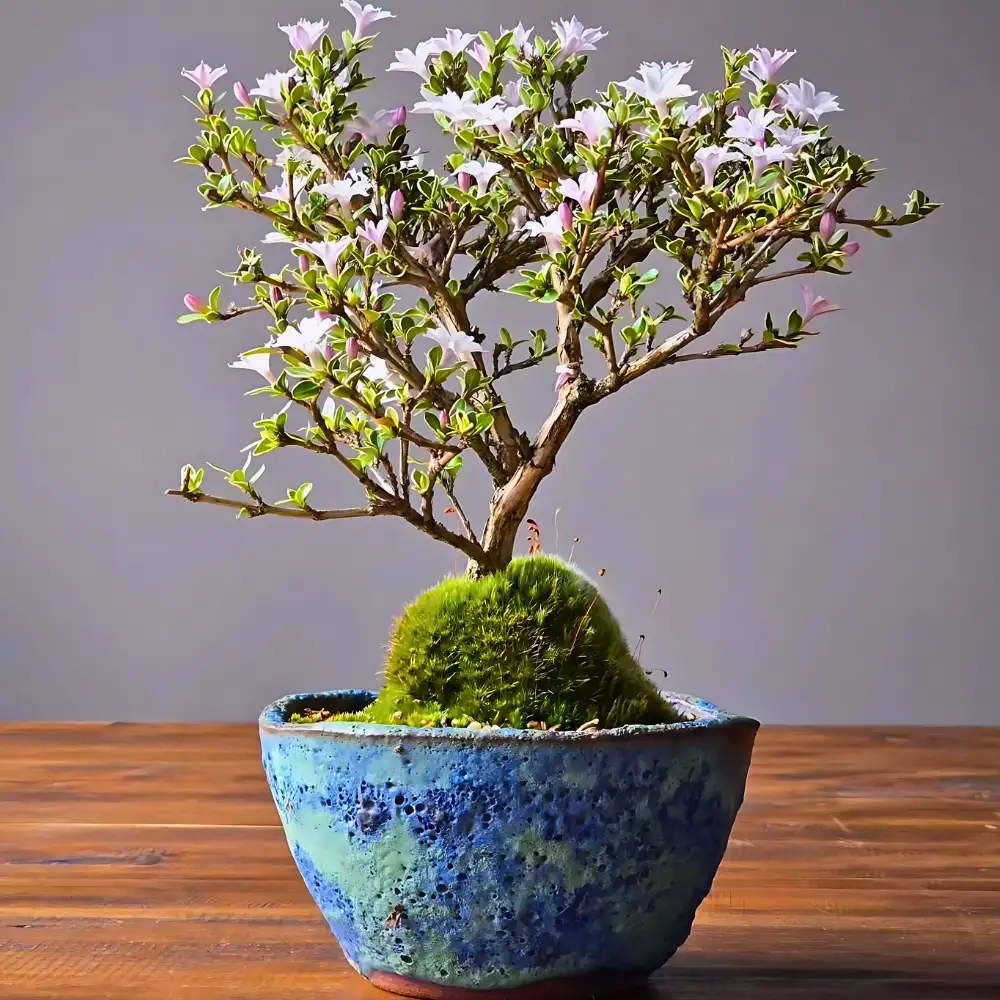Special and rare houseplants are, without a doubt, hot! They not only allow you to de-stress from the hustle and bustle of modern life but are also great household additions, and these days an essential feature of every plant enthusiast's home decor.
One trend that has been gaining more and more popularity over the last few years is cultivating urban jungle plants. Whether you're just starting as a plant parent or well on your way with your collection of green babies, there are special and rare urban jungle plants that will fit right into your home.
Houseplants That Perfectly Complement the Special and Rare Urban Jungle Plant Trend
An urban jungle pretty much means what it says — a jungle in an urban (city) environment instead of somewhere out there in nature. The need to be more environmentally conscious and connected to nature has been growing right along with the sales of houseplants and the plant trends you'll see all over your social feeds.
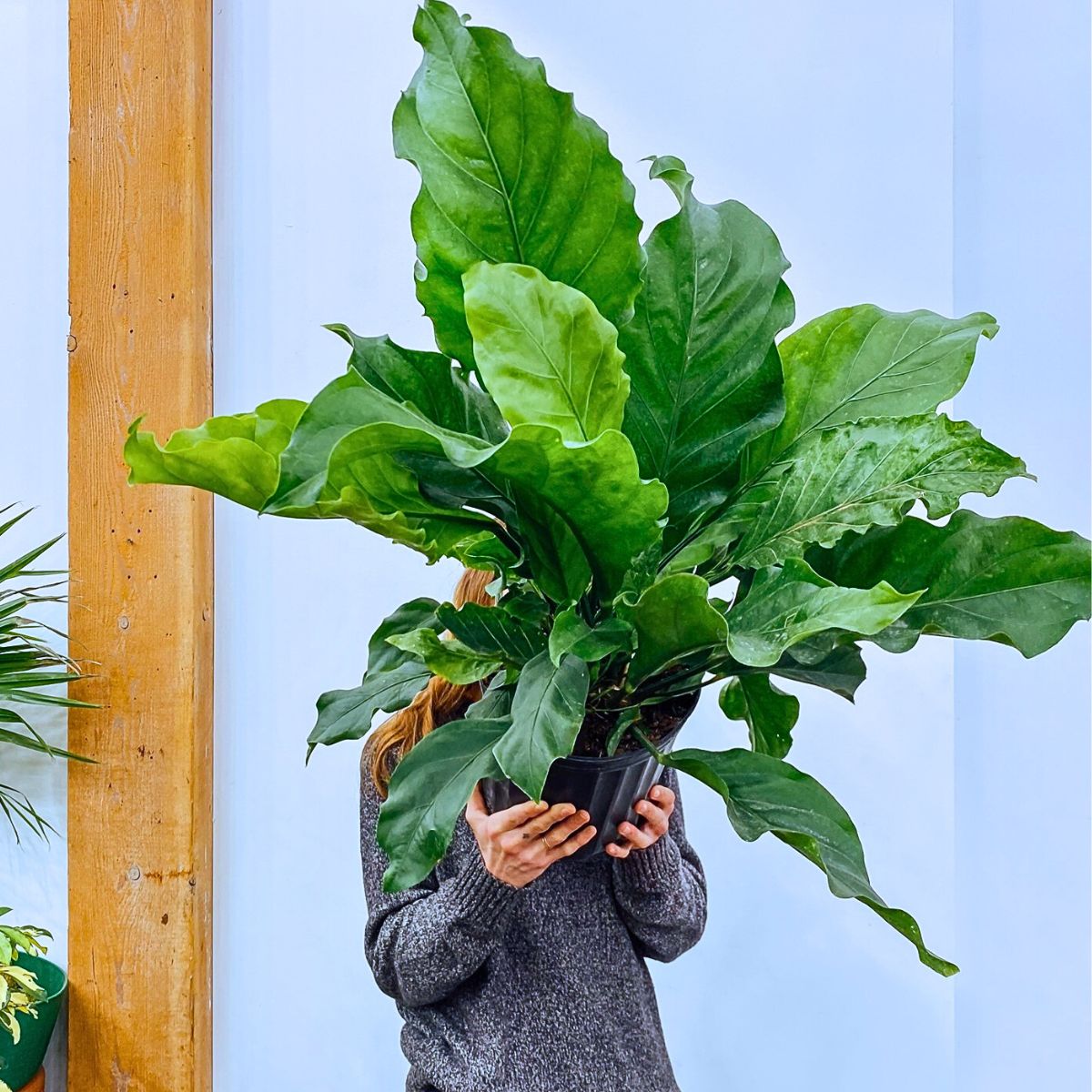
From large plant-filled hanging baskets, exotic flowers, and even trees - it's all allowed, as long as you bring a little bit of nature back into your home. Scroll down to see special and rare houseplants that are perfect for this urban jungle trend so you can get started on (or continue) making the world and our lives a little greener.
1. Alocasia Portadora (Elephant Ear or Giant Taro)
Alocasia portadora has its origin in the tropical jungles of Southeast Asia, where there is a lot of light and the soil always remains moist. The large leaves of this Alocasia — also known as the elephant ear plant — get droopy when the soil is too dry. This happens because it normally thrives in the high humidity of the jungle. But you can imitate these humid conditions right in your home by regularly spraying the leaves with a plant sprayer.
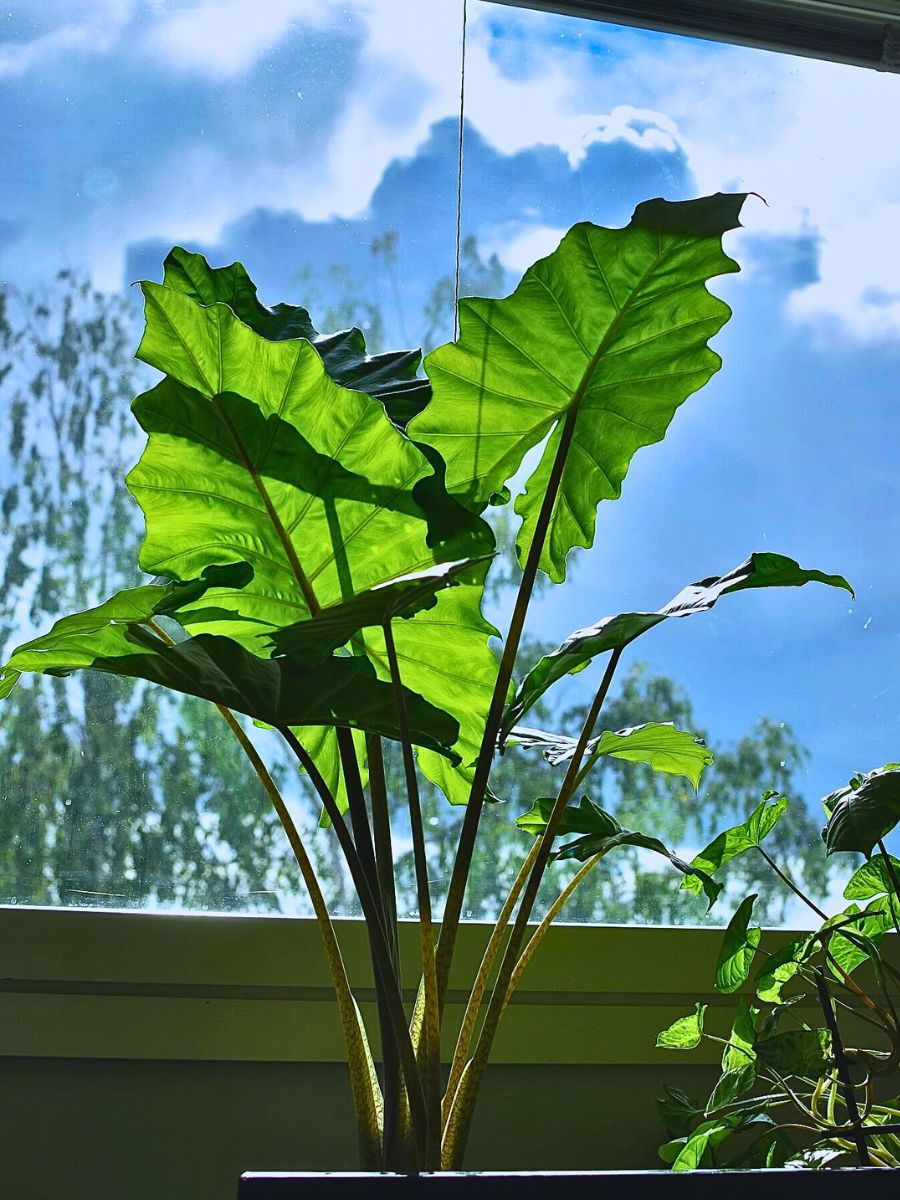
Photo by @allmygreenplants
A healthy Alocasia has firm, fresh green leaves with a beautiful shine to them. The Alocasia portadora has wavy edges on its leaves, which are especially noticeable on the larger leaves of this urban jungle plant. It is a plant that needs space to grow and plenty of indirect sunlight. A huge bonus is that this Alocasia has air-purifying capabilities and thus ensures a healthy indoor climate in your living or workspace.
Other fascinating Alocasia varieties you might want to check out are the Alocasia Frydek with velvety leaves and the special variegated Alocasia Macrorrhiza Variegata.
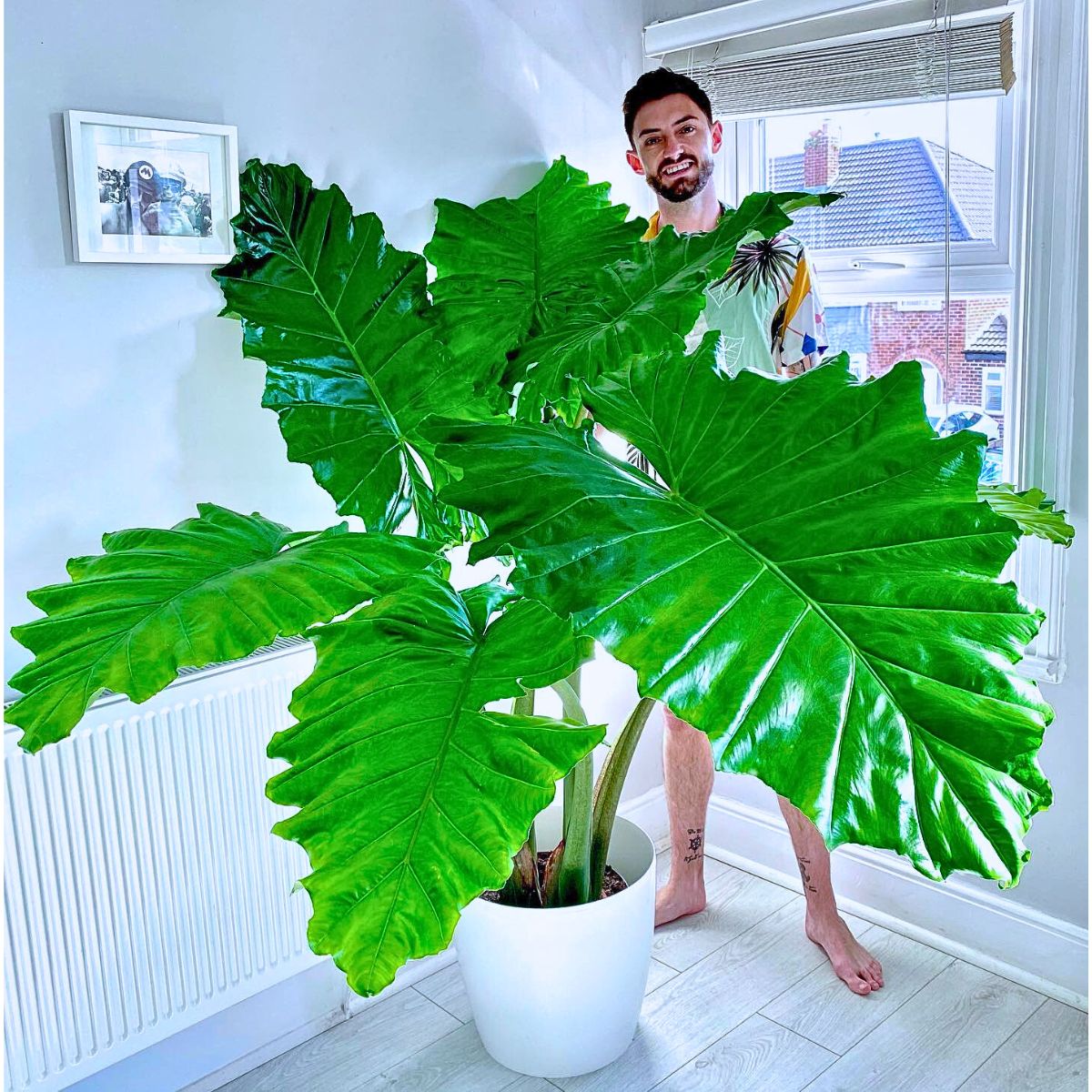
2. Musa Dwarf Cavendish (Banana Dwarf Cavendish)
The Musa houseplant, better known as the banana plant, is thousands of years old. This special tropical plant with long, vertical leaves can reach a height of 20 meters. Thankfully, there are dwarf varieties available as well, and the Musa dwarf Cavendish is one of those that perfectly fits into the urban jungle plants trend.
The Musa dwarf Cavendish usually stops growing at around 2 meters. However, this plant does make some demands on care and its environment. It likes quite a bit of water, in the summer almost twice as much as in the winter, but avoid a standing layer of water.
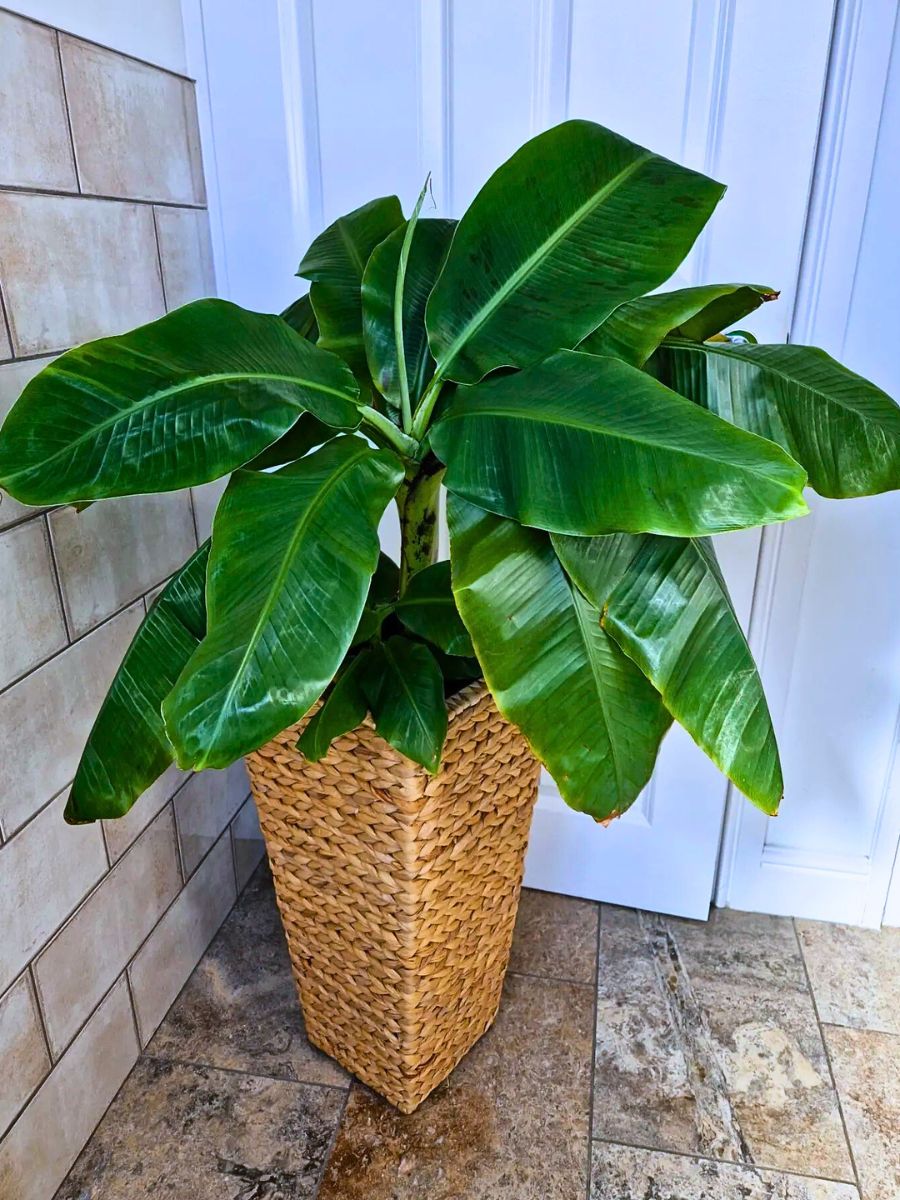
Drowning your plants in water causes root rot so it's better to keep the soil moist (which you can easily check by sticking your finger in it). Regularly spraying your banana plant is a great idea too and don't hesitate to put your plant outside during one of those summer downpours; they love it!
Give the Musa dwarf Cavendish lots of indirect sunlight but not direct sunlight as the leaves can easily burn when you leave them in the sun for too long. Give it a spacious pot and some fertilizer now and then, and you'll have yourself a happy banana plant baby.
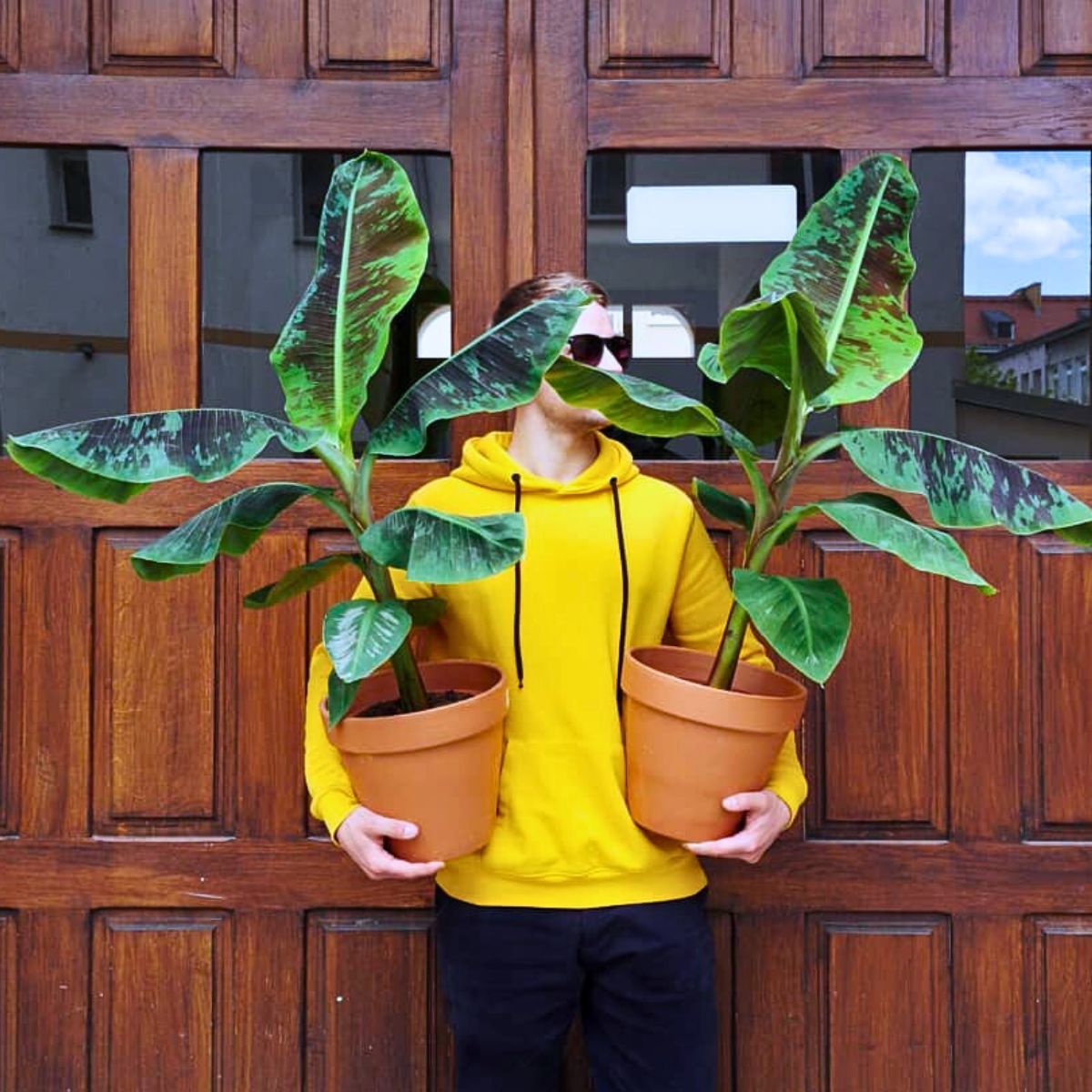
3. Pachira Aquatica (Money Tree)
The special houseplant Pachira aquatica, aka the money tree, is a perfect indoor foliage plant to give you a tropical feel. With its braided stem and bright green palm-looking leaves, it looks both like a tree and a palm. Native from Mexico to northern South America, the money tree is also very popular in Taiwan and other East Asian countries.
Money trees typically have a distinctive long, thin trunk that is made up of intertwined stems that are plaited together. In the wild, Pachira Aquatica barely resembles its houseplant relation and grows into huge trees with great flowers and no braided trunks.
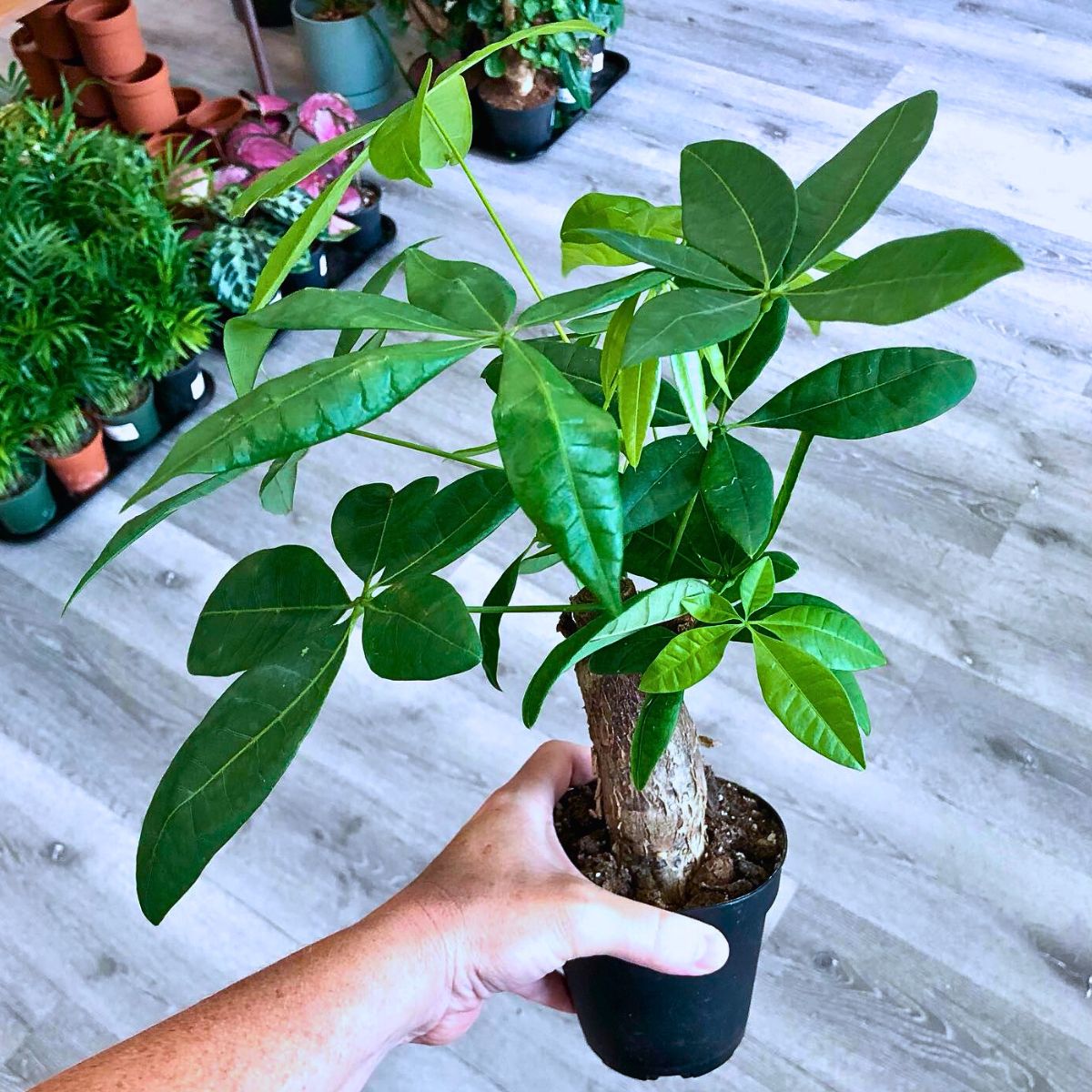
The money tree likes light but no direct sunlight. It’s best to place it on the north or east side of your house or office, rather than on the south side. A great indicator of its sunlight needs are the leaves; if the leaves turn yellow, your money tree gets too much light.
Although it likes humidity in general, you should let its soil dry out between watering. A good schedule for most environments is to water when the top 5-10 cm of soil is dry. Water thoroughly, until water flows out the drainage holes of the pot, and pour out the excess from the tray so that the roots don’t sit in water. During the growing season, fertilize once a month with a liquid plant food at half strength, but skip fertilizer in the winter.
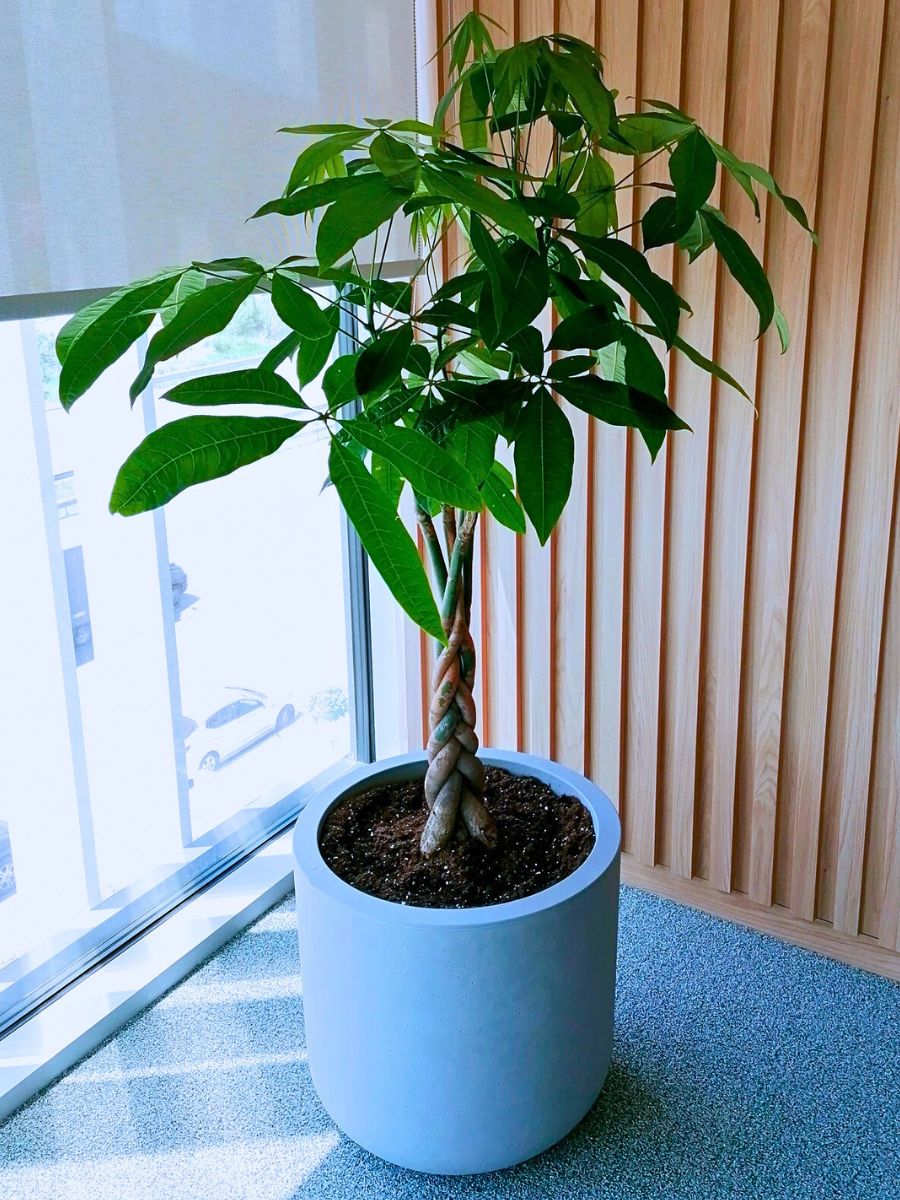
You can learn more about Pachira aquatica in our article 'Why Not Try Your Luck With This Money Tree?' (Yes, they bring luck!)
4. Areca Chrysalidocarpus Dypsis Lutescens (Areca Palm)
The Areca palm is one of the most famous palms that is also sold as an indoor plant. Officially the plant comes from the tropics of Southeast Asia. The family of the Areca palm is the Araceae, a very large family also called the Palmae. We also call the Areca palm gold palm. It owes this nickname to the yellow-orange fruits that it grows in nature. Did you know that? The plant actually consists of several shrubs of palms that grow together. This is especially noticeable if you would like to cut the plant.
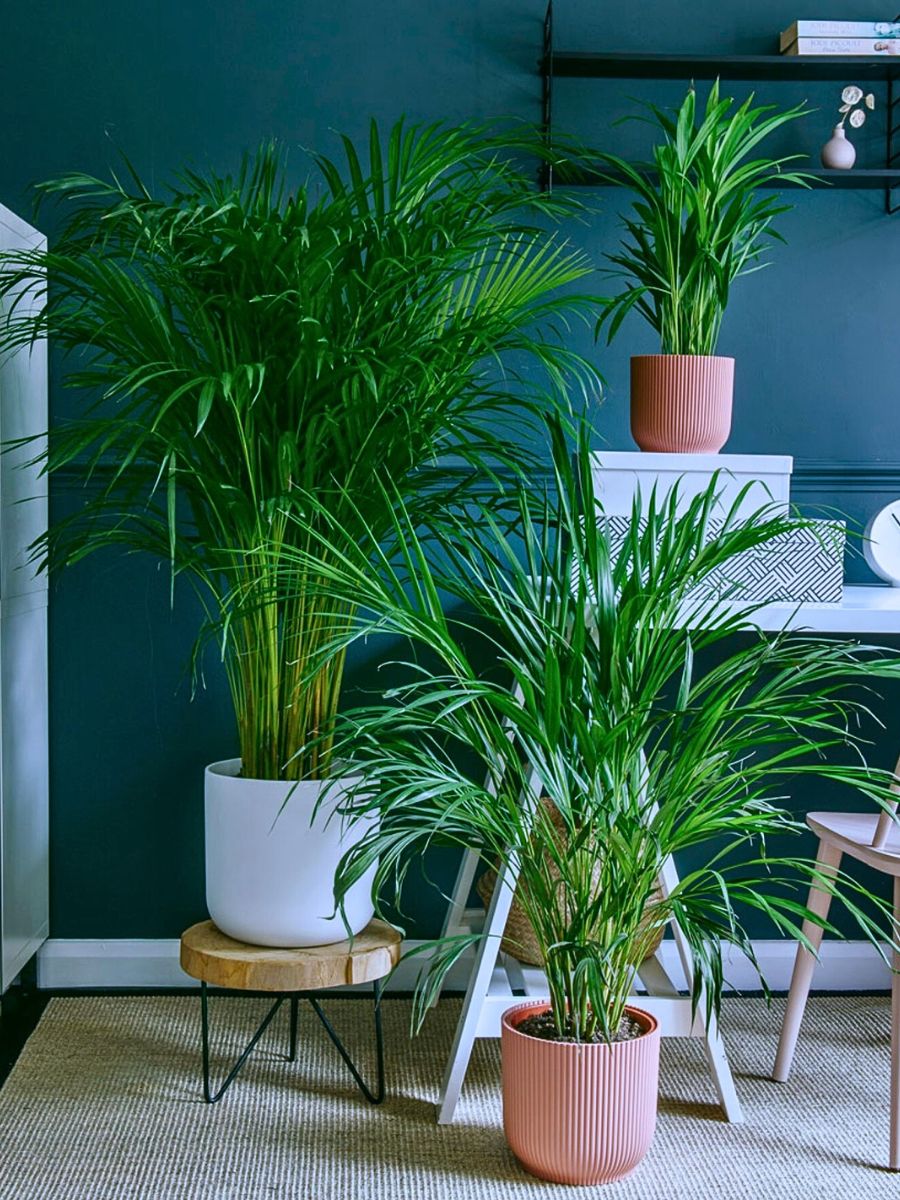
It is best to place the Areca palm in a spot with indirect sunlight. The Areca palm, unlike the Kentia palm, is a real water drinker. The Areca palm prefers to receive a sip of water once a week. However, in the warm summer months, it is best to water it twice a week. As soon as the potting soil is always slightly moist you are doing well. A very air-purifying plant, that’s the Areca palm. Although the plant is more known for removing harmful substances. The Areca palm also converts CO2 into oxygen, although it does this less well than purifying the air.
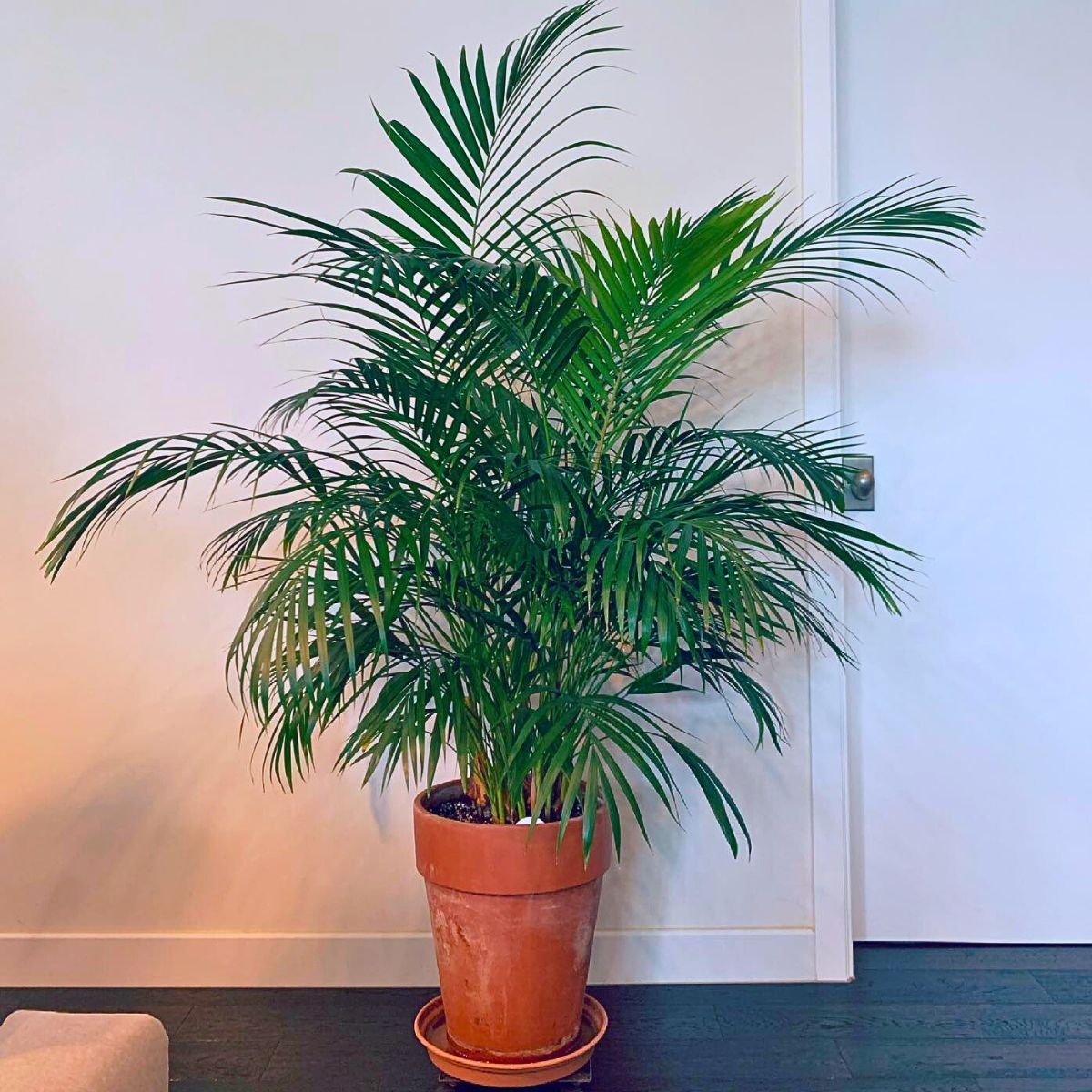
5. Sansevieria Bantel’s Sensation (White Sansevieria)
A rare and unusual houseplant, Sansevieria Bantel’s Sensation has distinctive white vertical striping in the leaves and is sometimes called White Sansevieria. The 2-5 cm wide leaves are narrower than most other sansevierias and in a container ‘Bantel’s Sensation’ grows up to a meter tall.
Place your sansevieria in a nice spot where it receives anything between bright or dim indirect light. This easy-going houseplant isn’t too picky about its light conditions and will thrive either way, except for the variegation of this cultivar because the white leaves are less tolerant of low light conditions than your typical snake plant. Watering should be done minimally and infrequently. Sansevieria Bantel’s Sensation is an extremely drought-tolerant plant and only requires water once every ten days or so amidst its growing season.
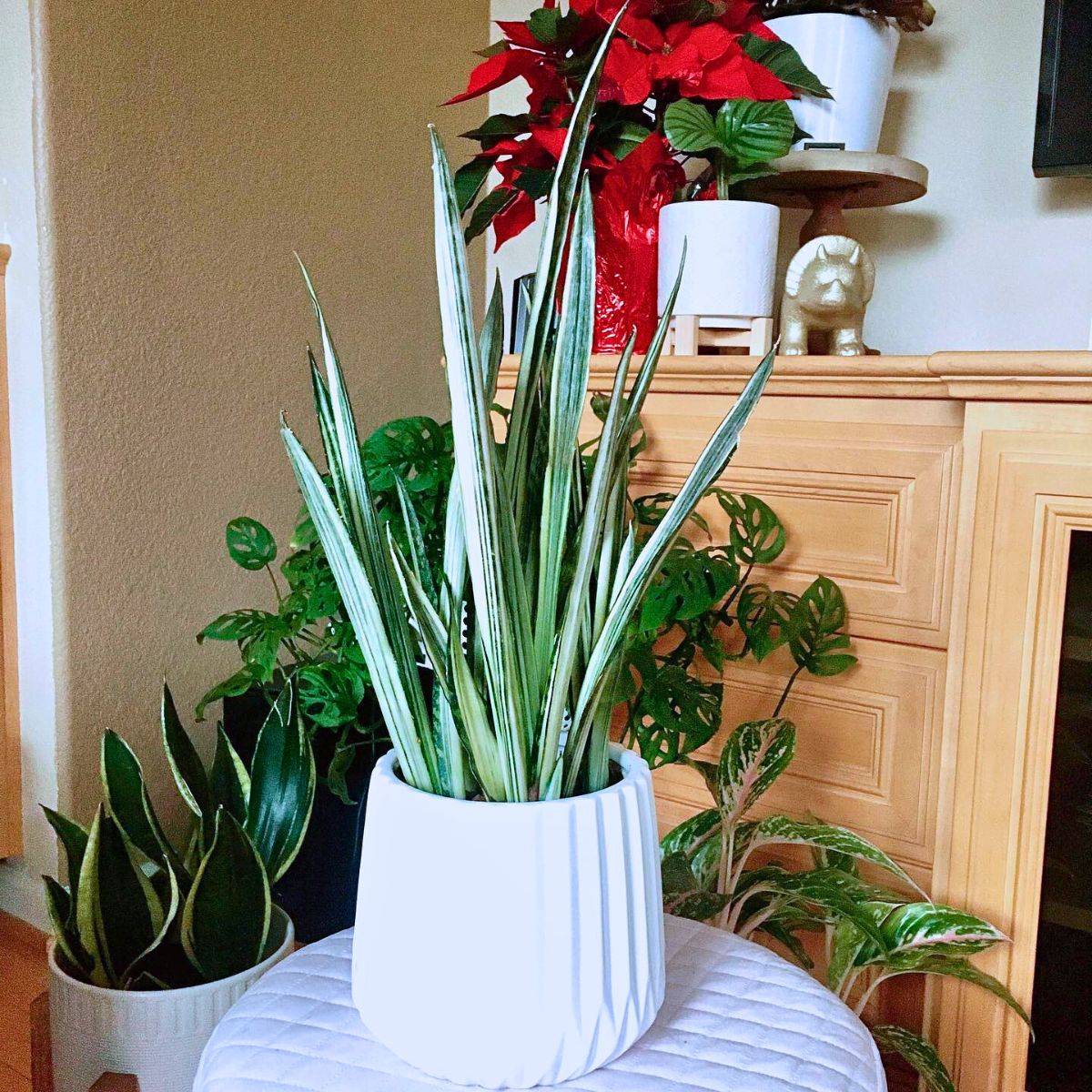
Temperatures on the warmer side are preferred because of their tropical roots but no extra effort is required for humidity. Keep in mind not to mist this plant because the droplets on its leaves can cause rot. If you fertilize your Sansevieria Bantel’s Sensation, do it twice a year and during the plant’s growing season. The showy Sansevieria Bantel’s Sensation makes an excellent urban jungle houseplant since it filters toxins from the air and is an indestructible houseplant.
6. Epipremnum Pinnatum 'Aureum' (Golden Pothos)
The Epipremnum comes from the Araceae family. A very large family which also includes the caladium, monster, and philodendron. Originally, the Epipremnum, also known as Pothos, comes from the forests of Southeast Asia. In nature, the leaf of the climbing plant can grow up to 90 cm in size. However, the leaf is not only remarkable because of its size. The Epipremnum has heart-shaped leaves varying between green, yellow, and white. A nice addition to your urban jungle plants collection!
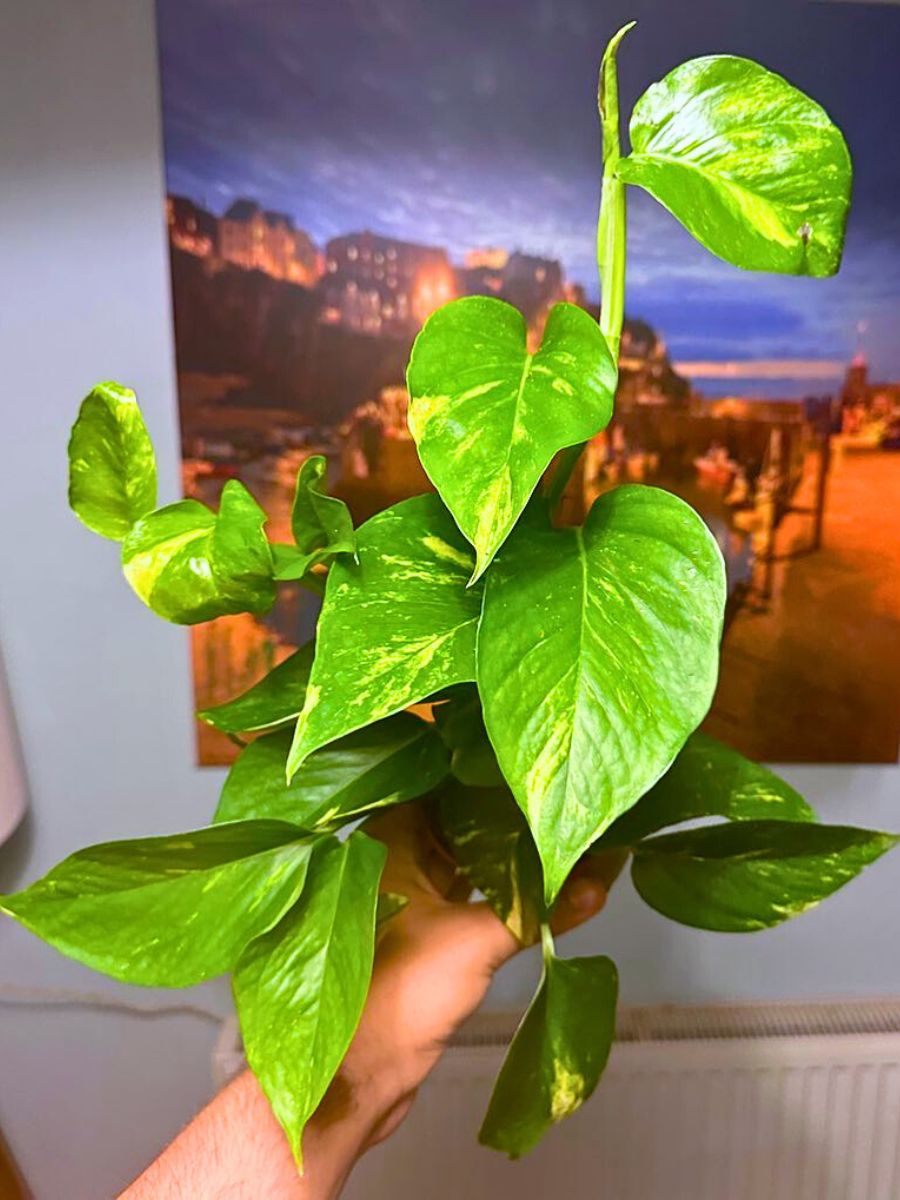
A fast grower with yellow variegated leaves. This Pothos houseplant doesn’t mind a little more or less sunlight. Wherever you put that plant, it doesn’t care. As long as you stay away from direct sunlight. It is best to give your plant a sip of water once a week. This keeps the soil of the plant always slightly moist. Something you make this plant baby very happy with! Do, however, avoid placing a layer of water in the flowerpot. If this is the case, the water cannot go anywhere and root rot will develop.
The Epipremnum consumes quite a lot of energy. It is therefore important to pamper the houseplant once every two weeks with plant food. Even though the leaf of this plant in the living room will not become 90 cm, the leaf is still very effective. According to NASA, the Scindapsus is one of the most air-purifying plants there is. During the day, the plant opens its stomata to convert CO2 into oxygen. Ideal!
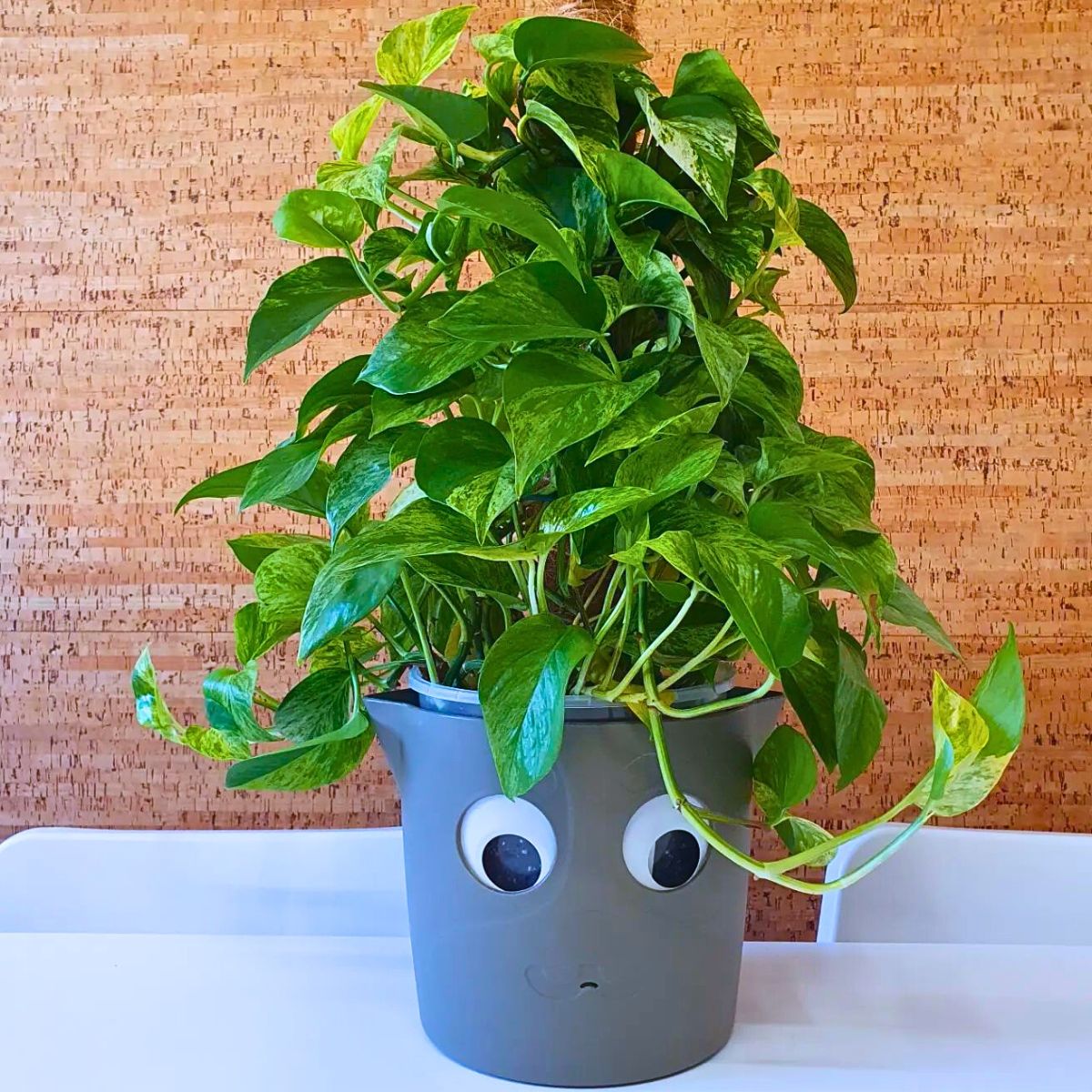
7. Monstera Adansonii (Swiss Cheese Plant)
The special and rare houseplant Monstera adansonii, better known as the Monstera monkey leaf, might not be as popular as the widely known Monstera deliciosa — which you can read everything about right here — but is still adored for its classic leaf shape and irregular holes. The perfect trailing addition to your urban jungle plants. This variety is still quite rare, and not available everywhere.
The Monstera adansonii or Monstera monkey leaf is a variety of Swiss cheese plants with classic irregular holes in their leaves. This mini Monstera is a must-have for any indoor jungle. Perfect for a tall shelf, they love to trail gently over their pot as they grow. If trained to climb they will also climb if guided along with a support. Those deep green leaves just keep growing with their irregular holes and slightly crinkly leaves.
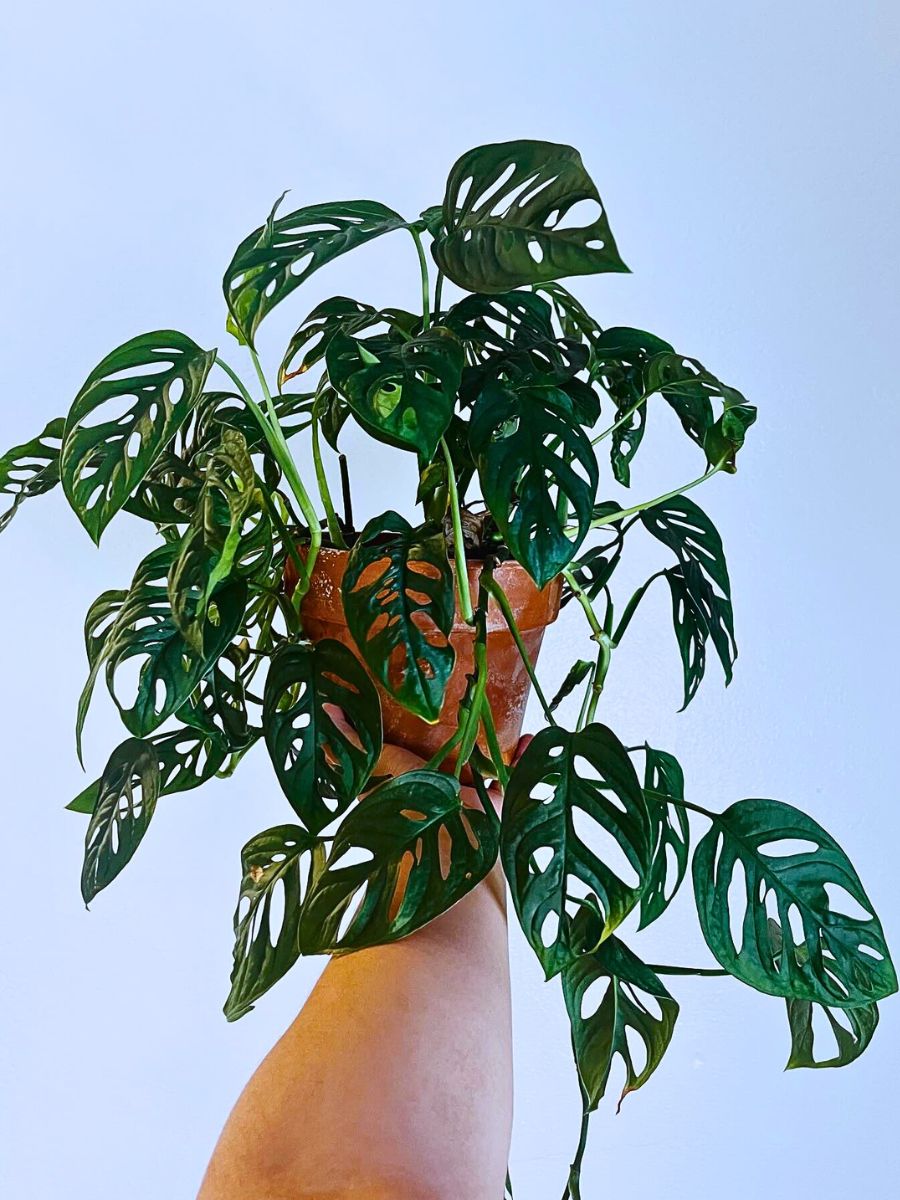
Popular because of its leaf shape and quick growth, he likes a drink every five days, just allowing it to dry out in between watering. He certainly likes to be in good light but direct sunlight will cause scorching. Mist the leaves and dust them occasionally too! This little guy loves a bright spot.
8. Pilea Peperomioides (Chinese Money Plant)
With stunning green round leaves and a plentiful collection of long stems, pileas is a real show-stopper. This low-growing plant is relatively easy to care for houseplant and is a must-have for any indoor jungle. Check out the #pileapeperomioides hashtag for so much Insta inspo.
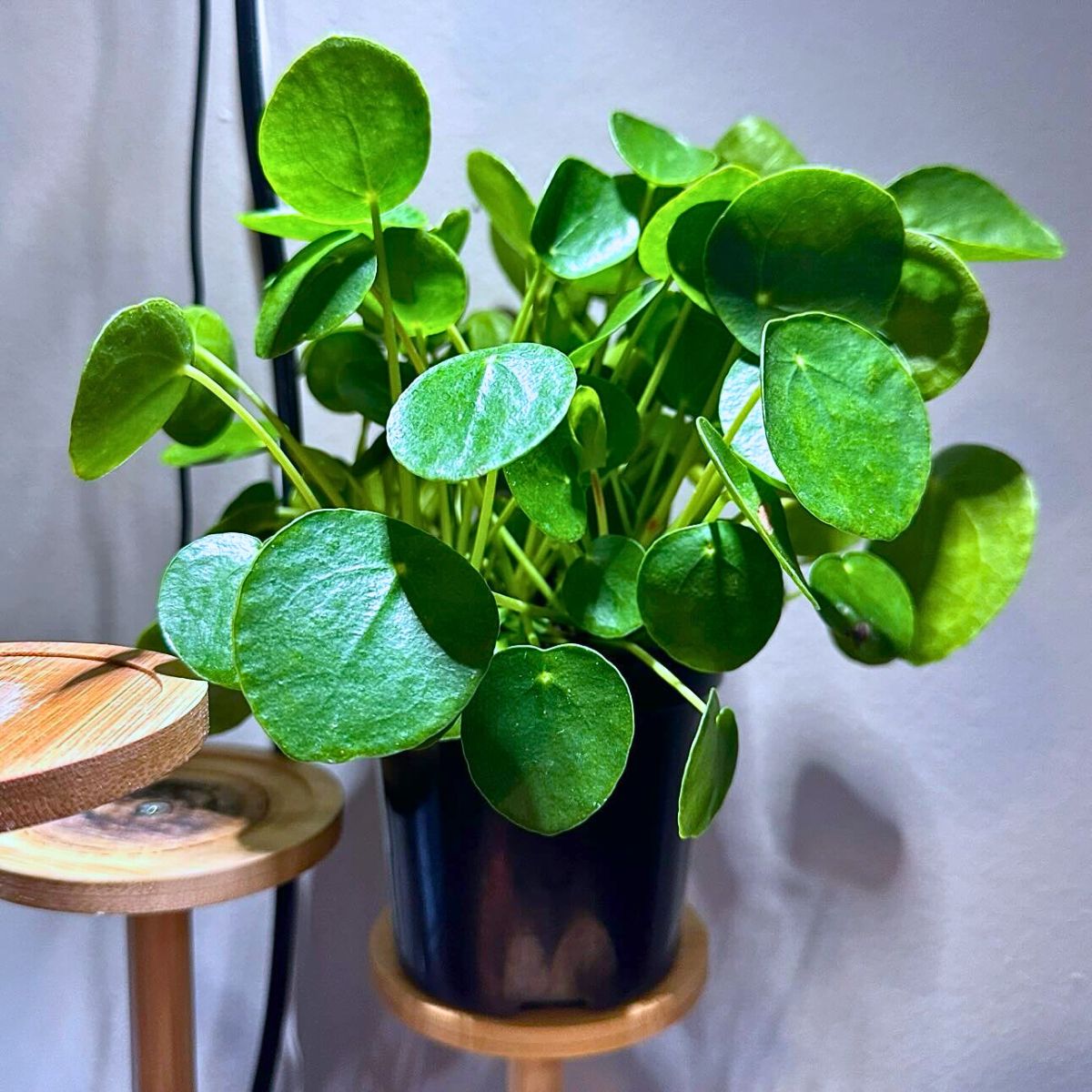
The Pilea peperomioides is great fun to look after. What’s even better is that it’s a plant perfectly safe for your pets. This plant is a member of the stinging nettle family (don’t worry – it won’t sting you!) and is super easy to look after. This remarkable little plant is a true beauty. With its rounded dark green leaves, are perfectly shaped to add a bit of interest to your indoor jungle.
Bright indirect sunlight is best, so make sure he is near a good source of light, a big bright window and he will be happy. Low light levels can cause them to grow tall and leggy. Keep those leaves dust-free so it can get all the light it need too. Water this houseplant approximately once a week, but check that the soil is dry to the touch before watering. You can do this by pushing your thumb an inch into the soil. If it is damp, leave it for a few more days as they don’t like soggy soil.
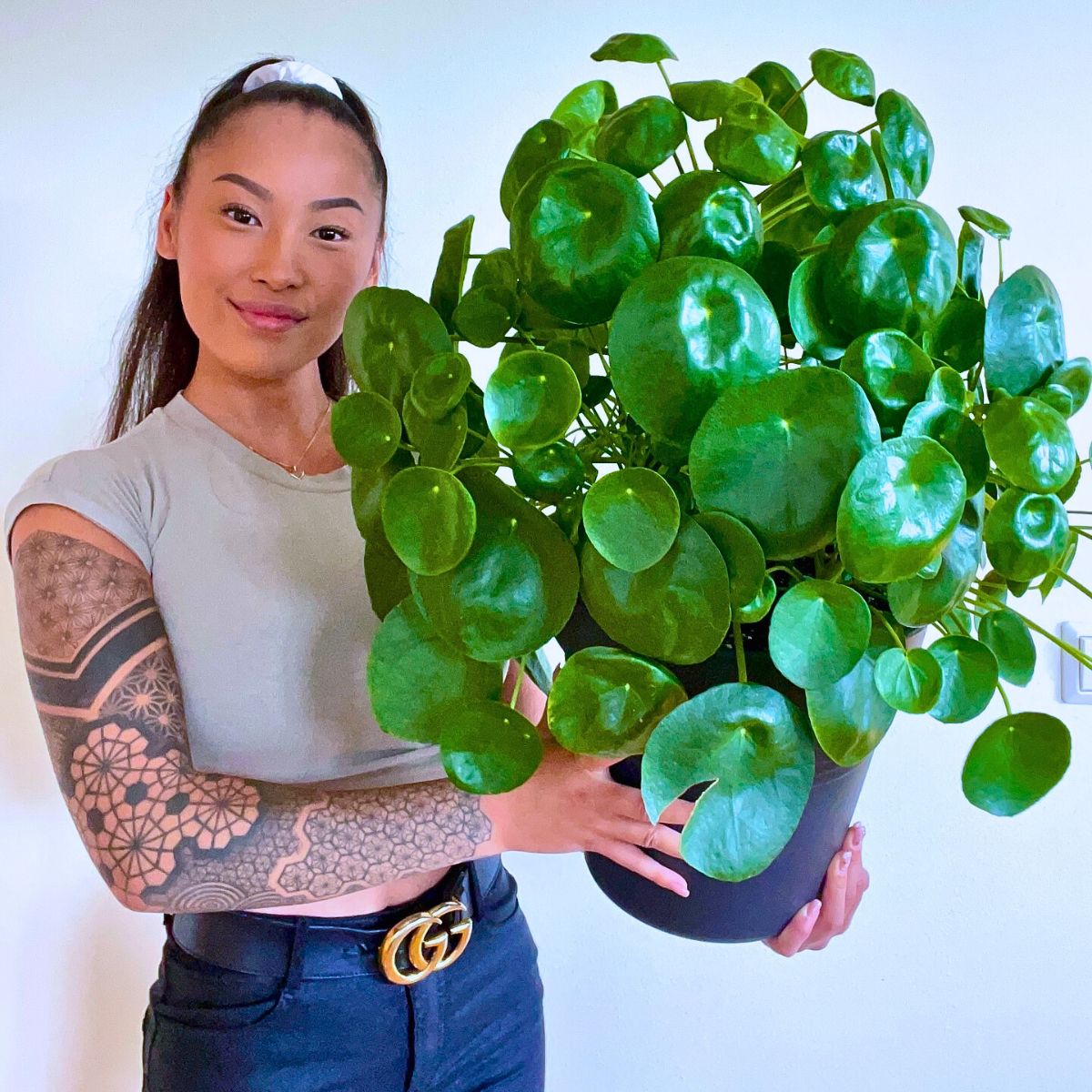
9. Anthurium Plowmanii
Lovers of large tropical evergreens have discovered the wonders of growing the very special and rare Anthurium plowmanii, of the genus Anthurium, from the family of Araceae, a tree climber indigenous to Brazil, Peru, Bolivia, and Paraguay. In terms of popularity, Plowmanii is fast replacing the more pervasive Swiss cheese plant or Monstera.
These plants are deep green, glossy, and leathery and have ruffled edges that look like waves, and the plant spreads out laterally with the leaves forming rosettes. Anthurium plowmanii care requires 70-85% sunlight, in other words, consistent exposure to bright light. Direct exposure burns the leaves.
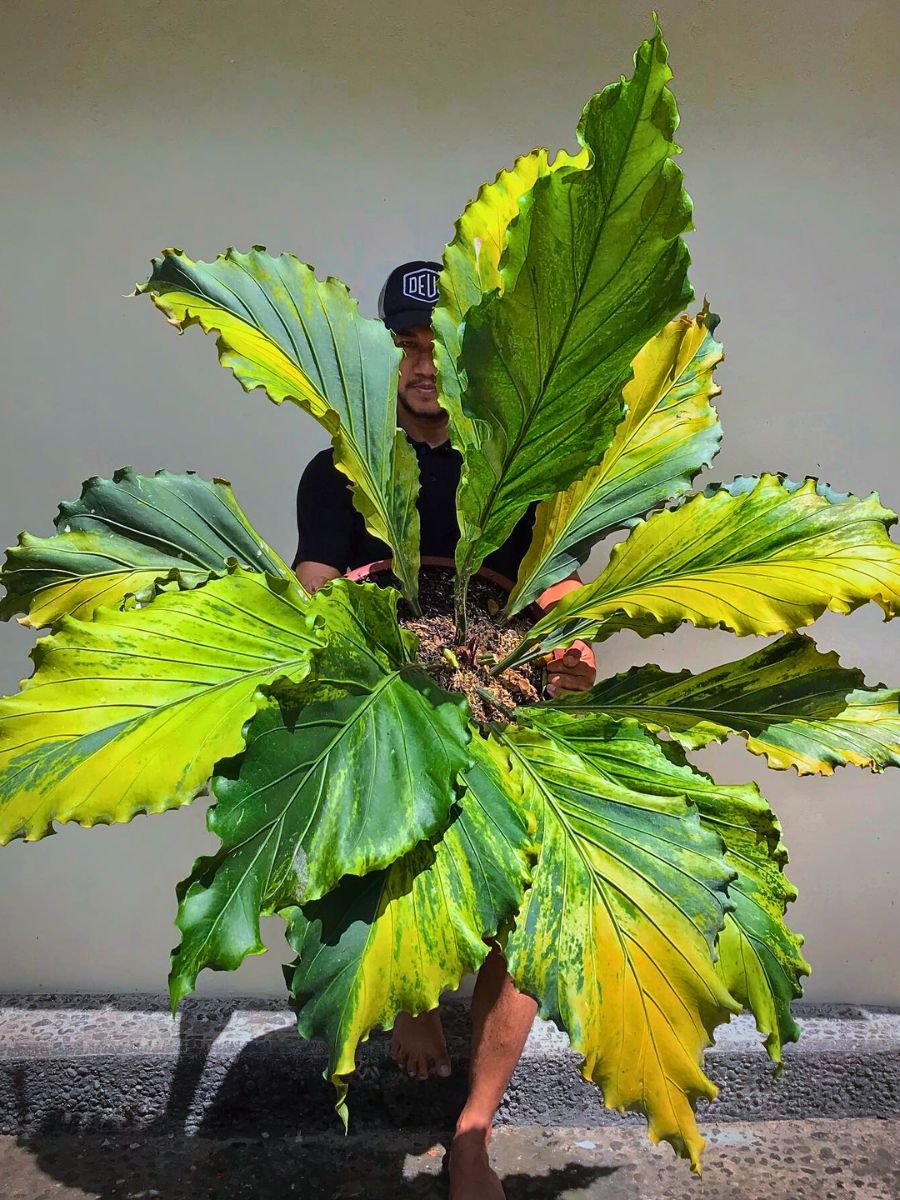
Photo by @bali_tropical_plants
Unlike most rainforest plants, you can grow Anthurium plowmanii — which is one of the more popular of the bird’s nest Anthuriumins — pretty well in dry conditions. It is commonly found in dry forest life zones and is often the only evergreen plant in some jungle areas during the dry season.
10. Philodendron Bipinnatifidum (Tree Philodendron)
Are you looking to fill a huge space with an extraordinary tropical plant? The special houseplant Philodendron bipinnatifidum will deliver. It also goes by the name of Thaumatophyllum bipinnatifidum, Philodendron selloum, and horsehead philodendron. Although it is not a very popular houseplant, it definitely deserves more exposure because of its beautiful vivid green leaves and vigorous growth.
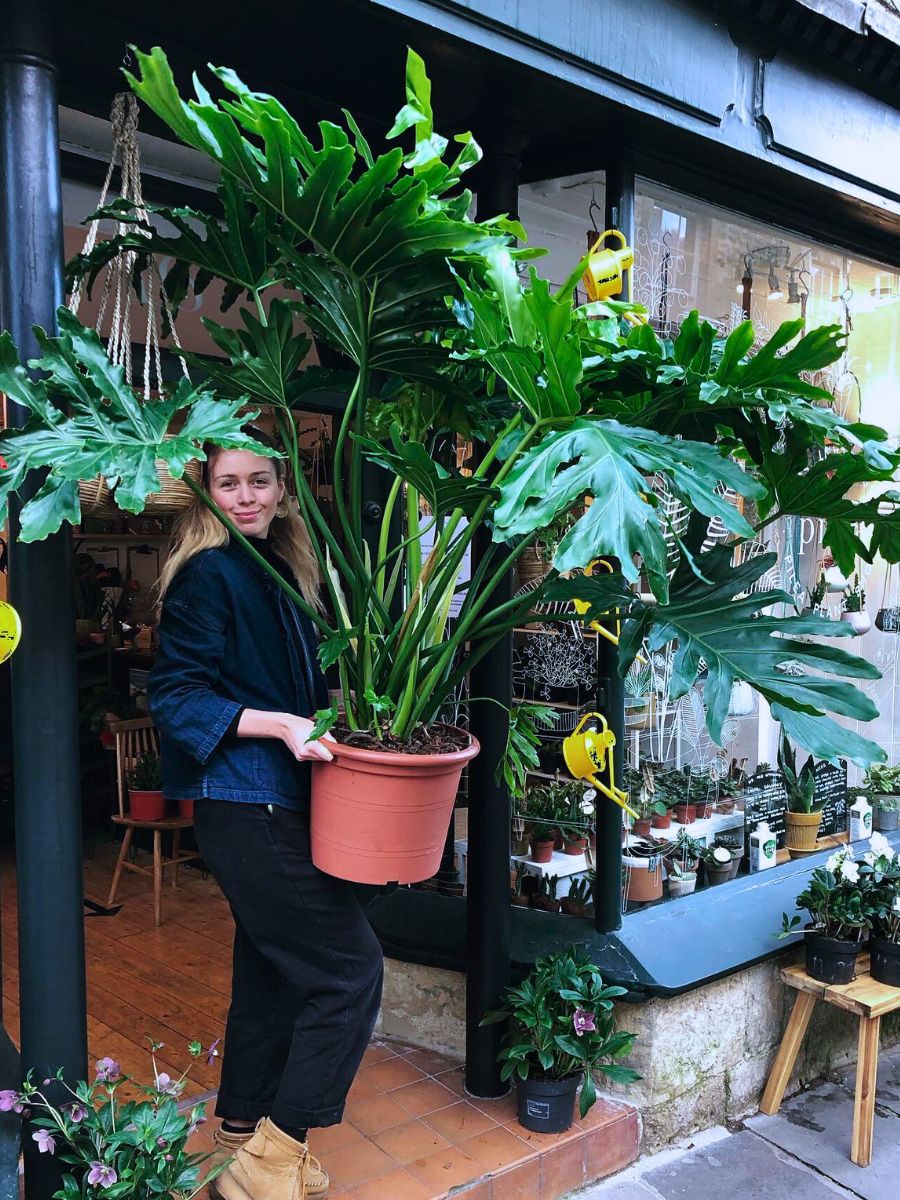
As a part of the family Araceae, this easy-to-grow philodendron is characterized by its large deeply lobed leaves and is a vining plant variety. Though harder to find for sale than some other more common philodendron varieties, the Philodendron Selloum makes for a perfect statement houseplant. It is known for its fabulous, showy, wide, and welcoming leaves that have the feel of a tropical jungle.
Like most other plants in the Philodendron genus, the very special Philodendron bipinnatifidum enjoys a mild climate that is neither too hot nor too cold, and neither too bright nor too dark—it likes to be in just the right place. This Philodendron also has unique requirements for water.
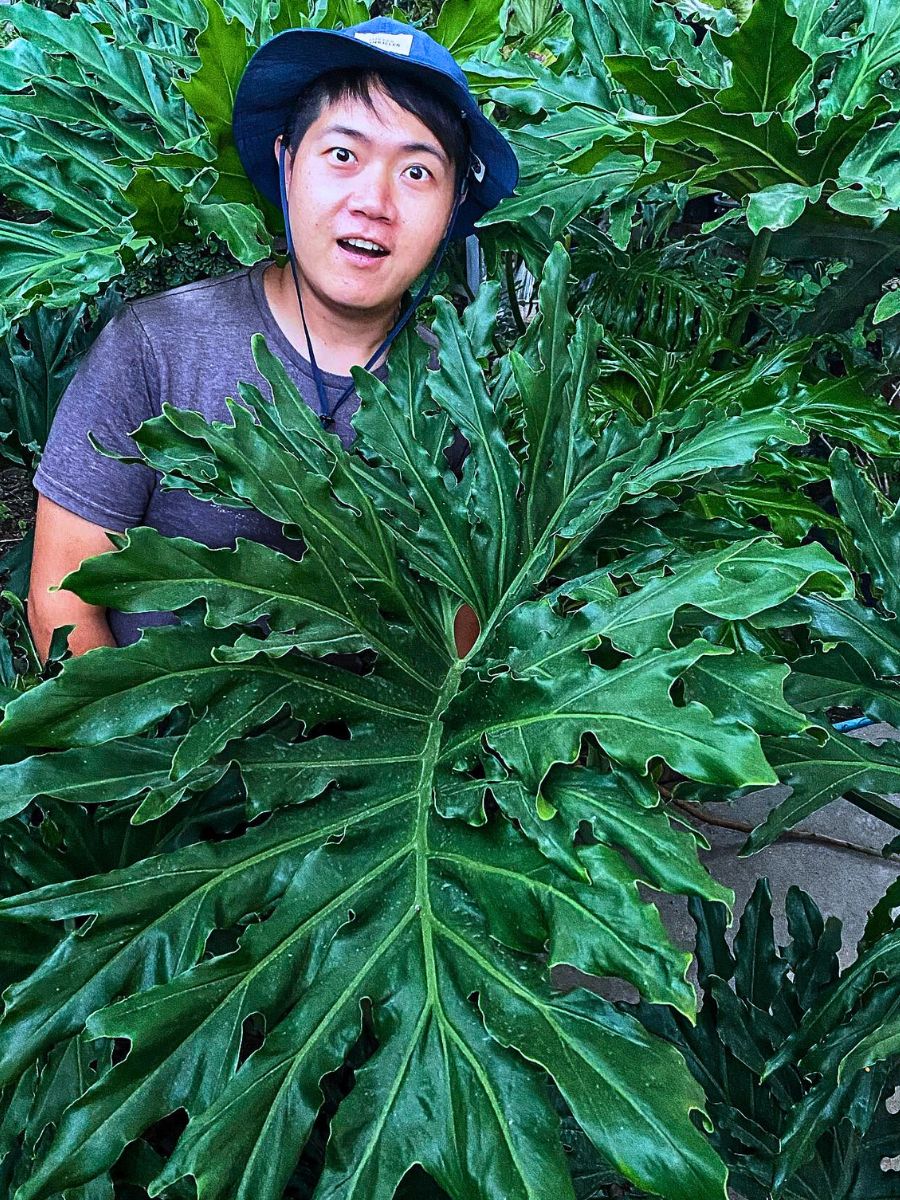
While you might be used to letting the soil dry out between watering with your other Philodendrons, keep in mind this one likes more water. Ideally, you should try to keep the soil barely moist at all times. You can learn more about this plant in our article 'Philodendron Bipinnatifidum: Tips on How to Care and How to Propagate Them'.
Feature image by @plantsbymathilde header image by @georgialaurette.

